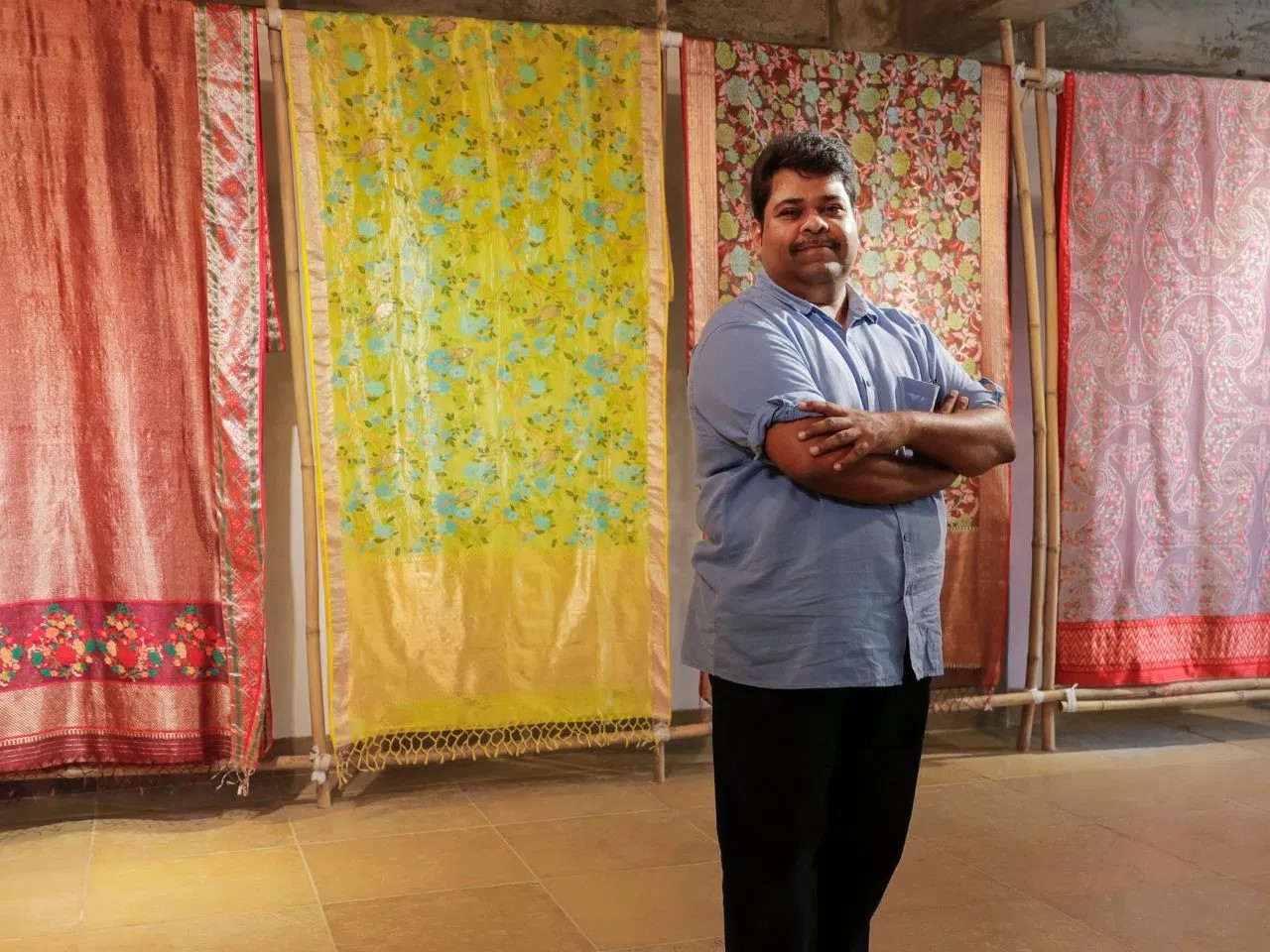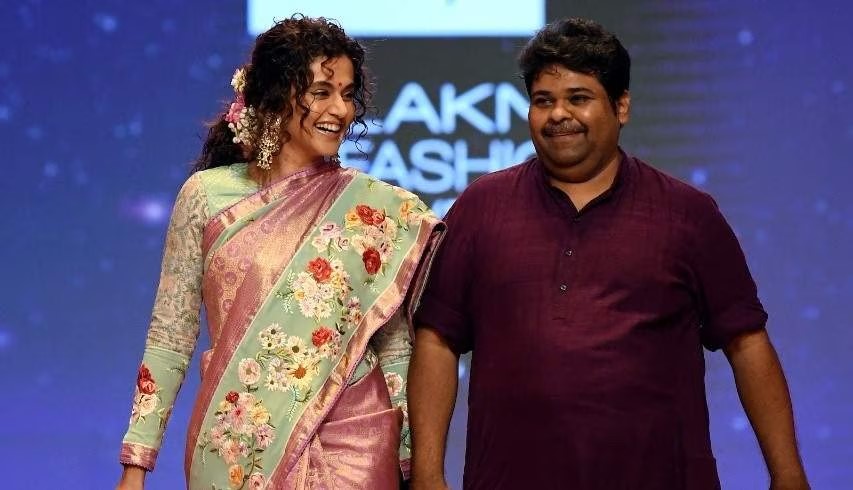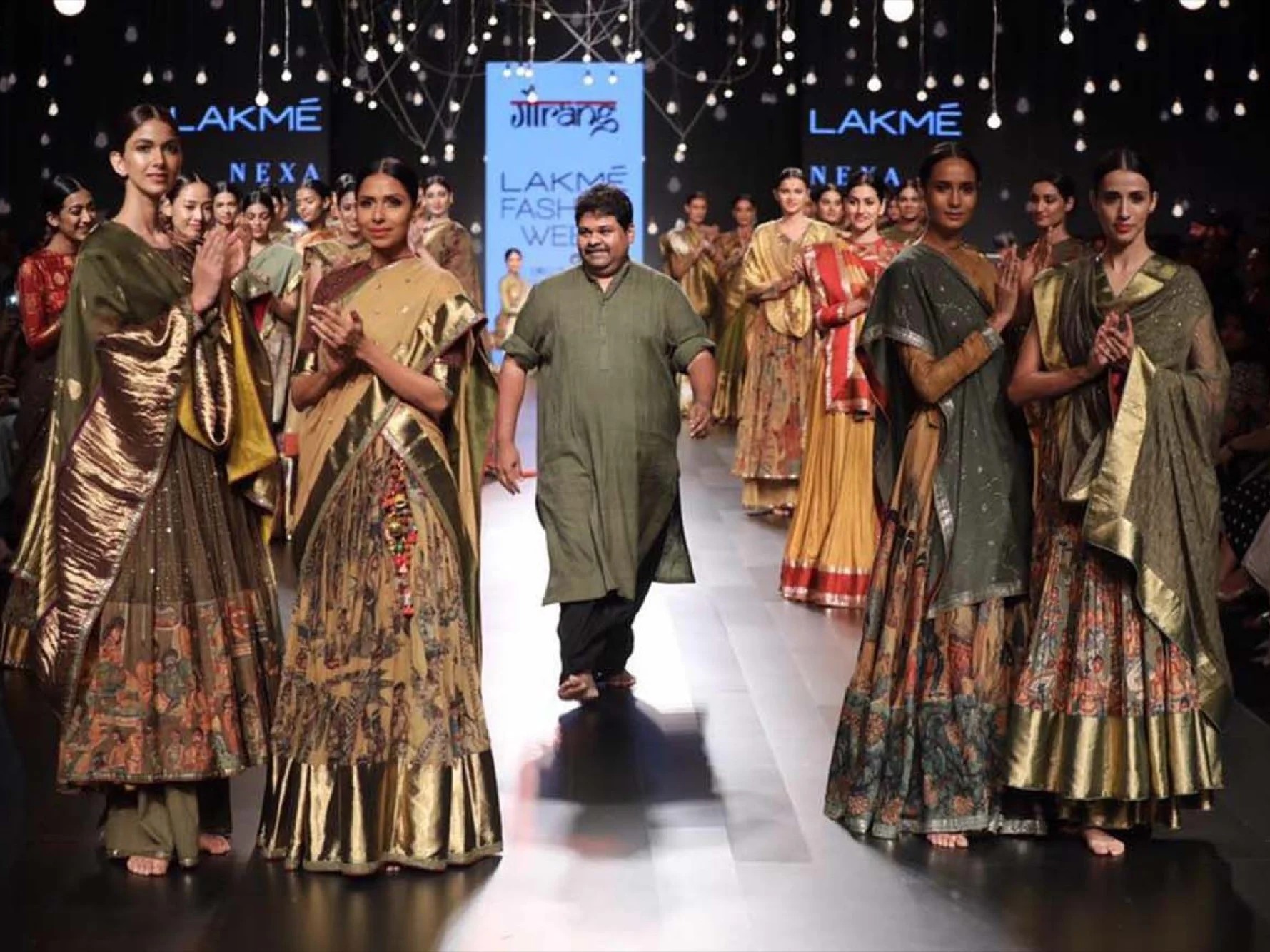(November 9, 2023) For the last 20 years, if there is one designer who has worked with the length and breadth of the rich canvas of weaves India has to offer – it is the iconic Indian designer Gaurang Shah. From reviving the Jamdani weave to his timeless work with heritage textiles like Ikats, Kanjeevarams and Uppadas, his name is synonymous with Indian weaves. Be it presenting traditional at Lakme Fashion Show, working on movies like Mahanati (or shows including the recent Made in Heaven where he dressed Radhika Apte and Kirron Kher for India’s Got Talent) or launching his label in New York, there is very little he has not done in the past two decades! His journey began at his father’s store (Indian Emporium) and today, he is rightly acknowledged as one of India’s premier designers who work with handlooms.

Designer Gaurang Shah gives new life to traditional Indian weaves by blending them with elements of modern couture
Revivalist to the core
Gaurang’s story begins in his father’s sari store, where he dreamt of reviving traditional handlooms. He recalls, “My mother’s exquisite sarees were a constant inspiration. As a self-taught designer, I faced challenges but I persevered. I made a significant impact by uplifting weaver communities in various regions, introducing new weaving techniques, and championing Indian weaves,” he tells Global Indian.
The designer embarked on his journey in the early 2000s, driven by a passion for creating exceptional Jamdani woven clothing and a deep desire to revive this fascinating weaving technique.
In fact, his college years at Pragati Mahavidyalaya in Hyderabad were spent convincing weaver families to embrace change, travelling to the key weaving centres including Lucknow, Varanasi, Uppada in Andhra Pradesh and Kanchipuram. Today, he leads a team 800+ master weavers and 7000 artisans across 16 states, crafting exquisite weaves using the Jamdani technique, instilling the best traditions and skills, while pushing weavers in new directions
However, this journey was not without its share of challenges. “The most significant hurdle I faced was convincing traditional weavers to embrace change and have confidence in their craft’s adaptability. This required a delicate balance between preserving the essence of the traditional Indian weave and infusing it with contemporary elements,” he says.

Gaurang with actor Taapsee Pannu
Another substantial challenge was rekindling consumer interest in handlooms, which had somewhat faded into obscurity. Owing to their cost and maintenance, many women had moved away from handlooms. Their resurgence demanded a vibrant and compelling new look for handloom textiles, a task that was undeniably challenging but one, Gaurang successfully embraced.
Heart of the loom
At the heart of Gaurang’s work are the timeless Indian textiles. With each region having its own handlooms from silk to cotton, the designer’s fascination with weaves is deeply rooted in their rich history and artistic potential.
“Weaving is not merely a craft; it’s a cultural tapestry that tells stories of tradition, skill, and creativity.” He has an affinity for the “exquisite” Jamdani weave, but also believes in “celebrating the diversity of India’s weaving heritage, from Kanchi silk to the rustic charm of Khadi, the sheer elegance of Uppada silk, the intricate beauty of Patan Patol and the timeless appeal of Benarasi silk. Each carries its own unique charm and narrative,” Gaurang explains.
What our Indian weaves do have in common is their ability to transform ordinary threads into wearable art. “They have the power to evoke emotions, preserve traditions and connect us to our roots,” he says. The key, he has learned, is to honour the roots of each textile as it is blended with accents of modern couture. “For example, we need to take the Kanchipuram silk saree or the Patola weave and then blend it seamlessly with contemporary elements,” he says. “It’s about embracing fusion and creating textiles that are not only exquisite but also relevant to today’s fashion landscape.”

In this journey, Gaurang is constantly exploring materials, and design elements. He also experiments with natural colours, celebrating the earth’s palette and bringing artisanal diversity to the forefront. His distinct strength lies in his commitment to push boundaries while respecting India’s cultural legacy and adapting these weaves to change. The result is a transformation of weaves, where tradition meets modernity, and where Indian weaves continue to enchant the world.
The world is his stage
Having dressed some of India’s most celebrated women, Gaurang intends to create timeless silhouettes which are unique to the person wearing them. He shares, “When I designed handloom sarees for Vidya Balan, it was about capturing her grace and elegance, celebrating her love for traditional weaves. Seeing her shine on-screen and off in my creations was a proud moment.”
For Sonam Kapoor, it was all about pushing the boundaries of fashion while staying rooted in tradition. He worked with the actress to craft sarees that effortlessly blended contemporary style with timeless handloom craftsmanship. “Kirron Kher’s vibrant personality resonated with the bold patterns and rich colours of our handlooms. It was a pleasure to collaborate with her and create ensembles that reflected her vivacious spirit,” Gaurang adds.
And then there are the brides. Each bride is a “unique canvas”, he says and adds, “I’ve had the privilege of helping them realise their dream wedding looks. It’s a beautiful journey to create sarees that become a part of their cherished memories.” The designer is cognisant of the transformative power of fashion and how it can make every individual feel like a star. Little wonder that his pulse on the fashion scene has never ebbed.
New York calling
At his store in New York, the celebrated Indian designer offers a range of sarees and bridal wear to Indians abroad. What overseas Indians often seek from ethnic wear is a harmonious blend of tradition and modernity, and who better than Gaurang to provide that?
He smiles, “They value the intricate craftsmanship and timeless beauty of sarees, anarkalis, and ghagras, but they also desire styles that can seamlessly integrate into their global lifestyle. This has led to the evolution of my designs, where I infuse traditional elements with contemporary aesthetics, creating ensembles that resonate with the NRI community’s sense of identity and heritage while catering to their fashion preferences.”
Today the designer has also branched into the hospitality industry with his restaurant in Hyderabad serving cuisine from across the country. His goal for the future remains the same – to experiment with lesser-known weaves and techniques, to bring them into the limelight and contribute to their revival. He signs off saying, “My goal is to make our Indian weaves a sustainable fashion choice, crafting pieces that remain timeless treasures in the wardrobes of generations to come.”
- Follow Gaurang Shan on Instagram.
